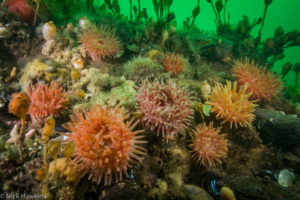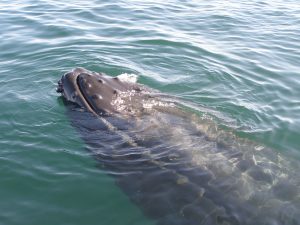Marine Protected Areas
CPAWS defines marine protected areas (MPAs) as areas legally designated to provide long-term protection of marine ecosystems, processes, habitats and species including marine biodiversity, and which can contribute to the restoration and replenishment of resources for social, economic and cultural enrichment. In general terms, this means that the area, from the surface to the sea floor, is protected from some activities which may have negative effects on the area.
At present, Canada has declared 14 MPAs. These MPAs represent 6% of the total 14% of Canada’s ocean that is protected. Information on these sites can be found on Fisheries and Oceans Canada’s website. Currently, New Brunswick has one MPA – the Musquash Estuary. The Musquash Estuary is unique because it is the largest ecologically intact estuary in the Bay of Fundy. It is home to numerous birds, mammals, invertebrates and marine plants. The area around the estuary, including extensive salt marshes, is also protected by various ENGOs and the province.
WHY SHOULD WE HAVE MPAS?
The ocean and coast are susceptible to damage from human activities. Whether it is from pollution, agricultural runoff, overharvesting of fish or other sea-life, natural resource extraction, coastal development, or climate change, the end result is the degradation of natural ecosystems and the possible extinction of species. Protecting marine areas is an important step in trying to preserve the biodiversity of our waters.
In addition to preserving biodiversity, MPAs provide plenty of social and economic benefits as well. MPAs that include zones where no extractive activities are allowed benefit fisheries by acting as nurseries for commercial fish that will then move into other areas. MPAs can also safeguard the natural areas and wildlife that tourism operators need to thrive, including for whale watching companies and recreational outfitters.
MPAs that protect coastal ecosystems such as wetlands are important as they can reduce climate change related flooding events and costs. Coastal habitats, such as salt marshes and eel grass beds also help to store carbon. Governments can make sure they keep performing this service by designating them as MPAs.

While Canada boasts one of the largest ocean territories in the world, less than 15% of it is protected through meaningful long-term conservation measures. CPAWS is encouraging Canada to complete a national network of MPAs that protects at least half of Canada’s ocean estate, with an objective to meet the international target of protecting at least 25% of coastal and marine areas by 2025 and 30% by 2030.
CPAWS is calling on the federal government to accelerate efforts to establish a national network of MPAs as an essential step to conserve the marine environment and support sustainable fisheries and coastal communities. This includes establishing a network of MPAs in the Bay of Fundy and moving forward with the Shediac Valley Area of Interest as part of the MPA network in the Gulf of St. Lawrence. Learn more at protectbayoffundy.ca

